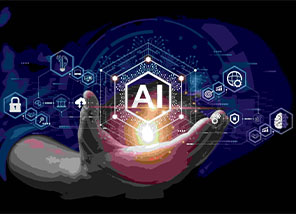
While some industries have historically benefited from observing the missteps of early adopters, the current landscape with AI tells a different story. Early implementers are already witnessing performance improvements of up to 20% in earnings within 18 to 36 months. These leaders are cultivating capabilities and confidence that position them for sustained competitive advantages, enabling them to redefine operations and innovate business models. The rapid evolution of AI resembles the transformative impact of the Internet in the 1990s, but change is occurring at an even quicker pace today.
Conversely, some investors and analysts express skepticism about AI's return on investment. This skepticism often stems from the understanding that harnessing AI's full potential demands more than just trial runs or technology deployment. Unlike earlier disruptions, such as the Internet or cloud computing, AI necessitates a fundamental rethinking of business processes. Companies that engage in thorough diagnostics, establish clear targets, redesign workflows, and then implement AI tools are realizing exceptional value.
These early achievements are leading to increased investment: the number of large firms committing over $100 million to AI implementation has more than doubled in the past year. This surge in investment is prompting experimentation across numerous use cases, yet research indicates that the majority of current value can be concentrated in five key areas.
1. Software and Product Development
Top use cases for generative AI in software development include code generation, documentation, refactoring, debugging, testing, and maintenance. Some organizations have reported savings of 15% to 40% in code generation and documentation, with even higher savings in refactoring and certain testing scenarios due to the utilization of existing patterns and rich datasets beyond the code base.
In certain companies, the integration of AI has spurred a reevaluation of software development productivity, expanding their focus to more traditional improvement areas such as product management, data-driven prioritization, and Agile methodologies.
For instance, Intuit, a financial technology firm, has been testing and scaling over 30 use cases to enhance end-to-end development velocity throughout its software development lifecycle. By incorporating generative AI tools into its platform, Intuit has improved productivity across various roles, achieving notable efficiency gains through tailored coding assistant tools that focus on the company's specific code patterns and repositories.
2. Customer Support
Generative AI can not only automate and optimize customer support but can also preemptively reduce the need for support. Its applications include analytics that anticipate and address potential customer issues, chatbots that enhance digital self-service, algorithms that match customers with the most suitable representatives, and knowledge assistant tools that empower agents to work more efficiently.
This technology can decrease adviser response times by up to 35%, assist consultants during the resolution process, and enhance the quality of results by up to 40%.
For example, a technology and manufacturing firm developed two advanced generative AI prototype applications for field services: a maintenance assist copilot that enhances field technicians' productivity and systems that analyze vast amounts of unstructured building sensor data, facilitating decision-making for emergency responders.
3. Sales and Marketing
In the realms of sales and marketing, generative AI is being utilized to create dynamic, personalized content, automate email marketing, enhance social media engagement, and streamline account planning. By optimizing these customer interactions, generative AI is significantly boosting productivity among sales representatives and marketing staff, reducing cycle times, minimizing churn, and improving click-through rates through hyper-personalization.
One technology hardware company, for instance, is revolutionizing content management by simplifying content creation and automating systems that synthesize, assemble, and publish content. Their goal is to reduce content-related time spent by 30%, with initial pilots showing promising results in various applications.
4. New Products and Features
Companies are leveraging generative AI in product and feature development to create more user-friendly products and interfaces, enabling greater customization and personalization. In healthcare, for example, AI can quickly analyze patient data to generate personalized care plans. In other sectors, generative AI is facilitating voice and text chat interfaces for smoother interactions with products.
For instance, Carrefour offers a generative AI shopping assistant that creates shopping lists and menu suggestions based on customer preferences, simplifying and enhancing the shopping experience.
5. Back Office Operations
Back-office functions are particularly well-suited for enhancements via generative AI due to the abundance of routine processes ripe for automation. In finance, generative AI can streamline the drafting of internal audit reports, tax documentation, and custom financial analyses.
Deutsche Telekom has implemented a chatbot for its procurement department, trained on the company’s policies and historical procurement strategies. This chatbot can assist team inquiries regarding policy compliance and provide recommendations, potentially saving business users up to 2,000 hours per month and procurement teams up to 5,000 hours monthly.
Anticipating Challenges
Embarking on an AI journey is a transformative process aimed at significant productivity improvements, yet it requires addressing challenges related to technological integration, workforce adaptation, and redefined business processes.
Preparing Business Processes: Companies should refrain from automating existing complexities. Instead, they must streamline and simplify processes before automation, eliminating unnecessary steps to free up resources during modernization.
Modernizing Data and Application Environments: Outdated databases and complex application environments can hinder the effective deployment of AI. Prioritizing modernization and data governance before scaling AI applications can unlock additional productivity gains.
Finding Technology and Services Support: Companies adopting AI, whether in the cloud or on-premises, require reference designs, large language model recommendations, and application development support—resources that are currently in high demand due to the proliferation of foundation model AI.
Leading an AI Transformation
To ensure successful AI implementation aligned with organizational goals, businesses should adopt several best practices:
- Prioritize AI for Value Generation: From the CEO down, set clear ROI targets and hold teams accountable for achieving savings and value creation through the budgeting process.
- Conduct Business Diagnostics: Avoid automating inefficient processes. Invest in identifying value opportunities and redesigning workflows before introducing automation.
- Define a Clear Use Case Roadmap: Concentrate on functional areas with high-value potential, such as sales, marketing, customer support, software development, and operations.
- Leverage Multiple AI Delivery Models: Use a combination of self-service tools, commercial AI systems, and custom models to meet varied needs and data sensitivity.
- Build Shared Datasets and Technology Platforms: Create economies of scale across solutions and enhance product management and Agile development processes to support rapid AI deployment.
- Establish Governance and Risk Management: Develop responsible AI practices and ensure clear communication and talent strategies for employees.
Every organization’s AI journey will be unique, but the dramatic rise of AI signifies a fundamental shift in the landscape. Its strategic and innovative application will be crucial for gaining a competitive edge in the coming decade. Late adopters risk falling behind, making it essential for businesses to embrace AI without delay.








